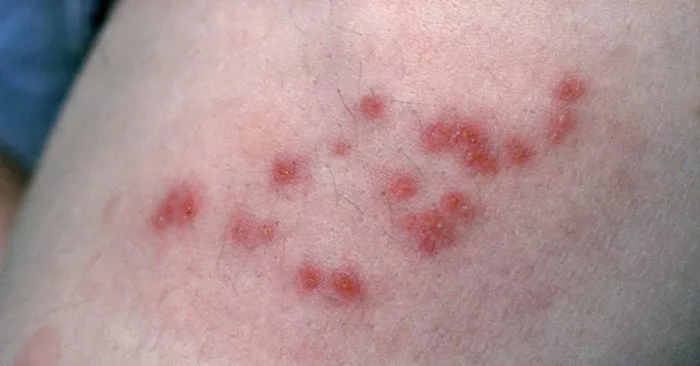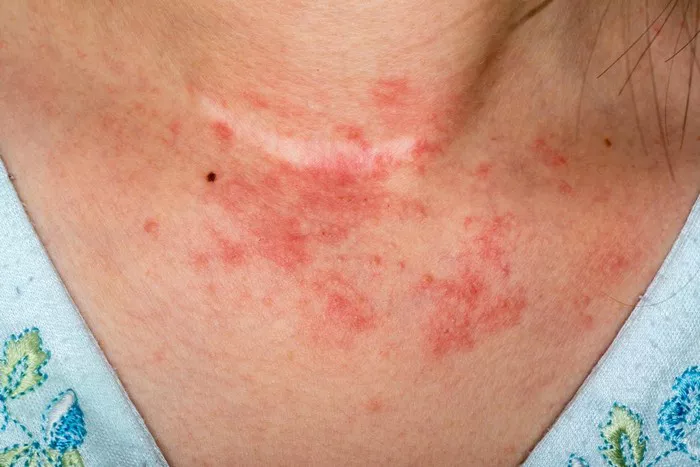In the realm of viral infections, the terms “chickenpox” and “herpes” often conjure images of discomfort and concern. Both are caused by members of the herpesvirus family, leading to confusion and questions about their relationship. Over the years, scientific research has shed light on the connection between chickenpox and herpes, unraveling intriguing insights into their similarities, differences, and implications for public health.
Exploring the Viral Cousins: Chickenpox and Herpes
At first glance, chickenpox and herpes may seem worlds apart in terms of symptoms and severity. Chickenpox, caused by the varicella-zoster virus (VZV), typically manifests as a blistering rash accompanied by fever and itching. On the other hand, herpes infections encompass a spectrum of conditions, with herpes simplex virus type 1 (HSV-1) and type 2 (HSV-2) responsible for oral and genital herpes, respectively.
Deciphering the Genetic Blueprint
Despite their distinct clinical presentations, chickenpox and herpes share a common ancestry at the genetic level. Both viruses belong to the herpesvirus family, characterized by their ability to establish lifelong latent infections in their hosts. The genetic makeup of these viruses harbors intriguing similarities, underscoring their evolutionary relationship and shared mechanisms of infection and persistence.
Unraveling the Lifecycle: From Dormancy to Reactivation
One of the defining features of herpesviruses is their ability to establish latent infections within host cells, remaining dormant for extended periods before reactivating under favorable conditions. In the case of chickenpox, primary infection typically occurs during childhood, followed by latency in sensory nerve ganglia. Years or even decades later, the virus may reactivate, giving rise to herpes zoster, more commonly known as shingles.
Similarly, herpes simplex viruses exhibit a similar pattern of latency and reactivation, with HSV-1 residing in trigeminal ganglia and HSV-2 in sacral ganglia. Factors such as stress, immunosuppression, and ultraviolet radiation can trigger viral reactivation, leading to recurrent outbreaks of oral or genital herpes.
Bridging the Gap: Chickenpox and Herpes Zoster
The connection between chickenpox and herpes becomes more apparent upon closer examination of herpes zoster, the reactivation of VZV following latency. Individuals who have experienced chickenpox are at risk of developing herpes zoster later in life, particularly as age weakens the immune system’s ability to control latent infections.
Herpes zoster typically presents as a painful rash along a specific dermatomal distribution, often accompanied by neuralgia. The link between chickenpox and herpes zoster underscores the importance of vaccination against varicella, which not only prevents primary infection but also reduces the risk of subsequent reactivation and its complications.
Navigating Public Health Strategies
Understanding the relationship between chickenpox and herpes has significant implications for public health strategies aimed at controlling these viral infections. Vaccination programs targeting varicella have proven effective in reducing the incidence of chickenpox and its associated complications, including secondary bacterial infections and neurological sequelae.
Furthermore, vaccination against varicella can indirectly mitigate the burden of herpes zoster by limiting the pool of susceptible individuals who may experience VZV reactivation later in life. High vaccination coverage rates are essential for achieving herd immunity and protecting vulnerable populations, including infants, pregnant women, and immunocompromised individuals.
Conclusion
In conclusion, the relationship between chickenpox and herpes extends beyond mere clinical manifestations, encompassing genetic, epidemiological, and public health dimensions. While chickenpox and herpes simplex viruses belong to distinct species within the herpesvirus family, they share common features, including latency, reactivation, and the potential for long-term complications.
By elucidating the link between chickenpox and herpes, researchers and healthcare professionals can devise more informed strategies for prevention, diagnosis, and management. Vaccination against varicella stands as a cornerstone in the prevention of chickenpox and its sequelae, offering protection not only against primary infection but also against the reactivation of latent VZV as herpes zoster.
As our understanding of these viral cousins continues to evolve, so too will our efforts to combat their impact on global health. Through continued research, surveillance, and education, we can strive towards a future where the threat of chickenpox and herpes is minimized, allowing individuals to live healthier, more resilient lives.
Related Topics:

























